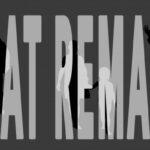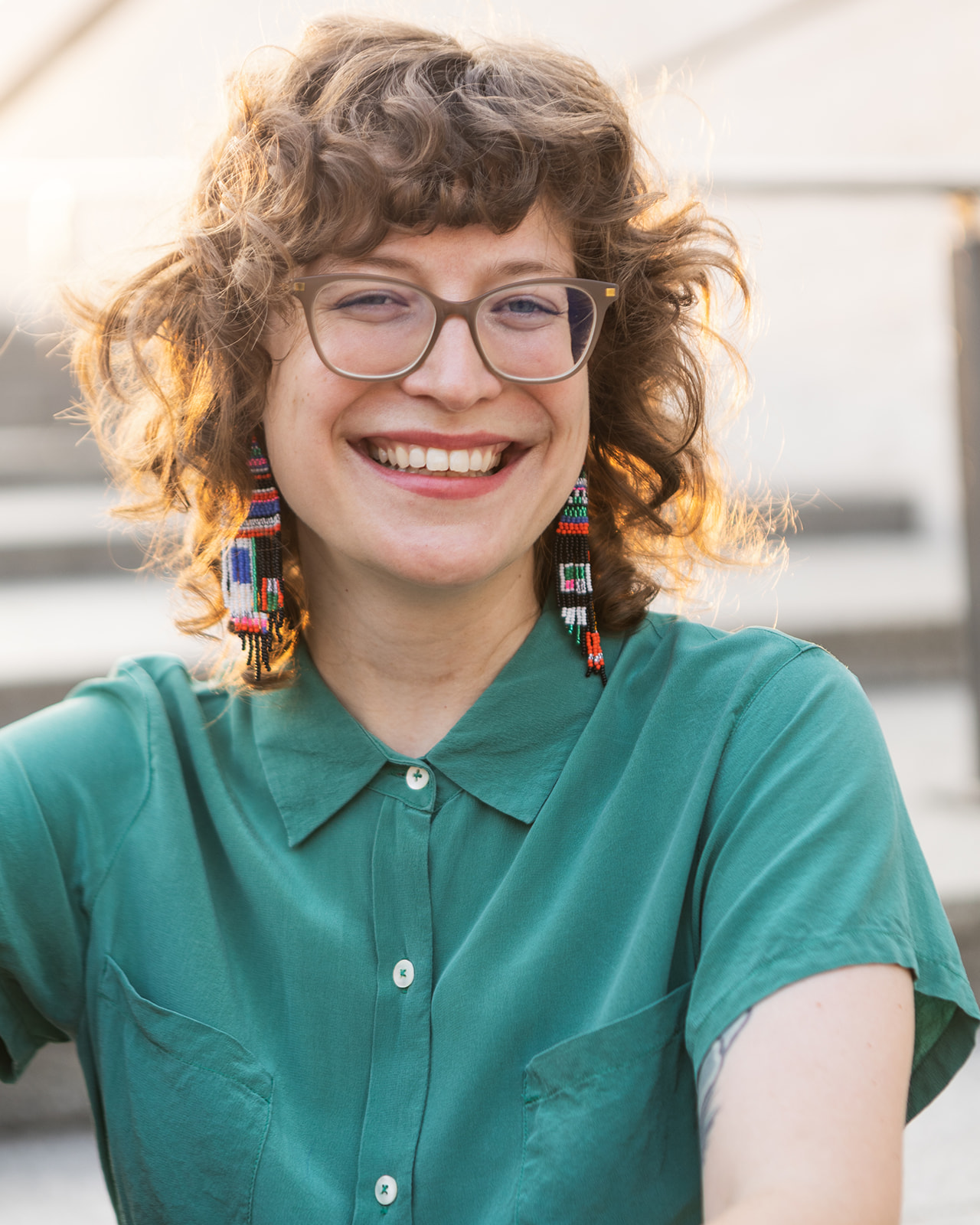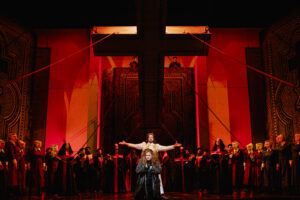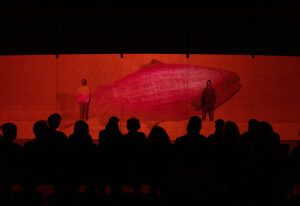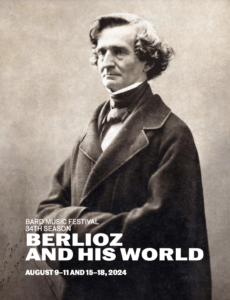PUBLISHED FEBRUARY 23, 2017
This past January team members of What Remains were in residence at The Fisher Center for Performing Arts. Premiering at WE’RE WATCHING this April, What Remains is a collaboration between poet, essayist, playwright, and editor, Claudia Rankine, author of the acclaimed poetry collection, Citizen: An American Lyric, among other important works; documentary photographer and filmmaker John Lucas, who has directed and produced several cutting-edge multimedia projects including a collaborative series of video essays with Rankine entitled “Situations”; and artist and writer, Will Rawls, who works with dance, objects, sound and speech in solo and group performances that explore the idea of self and becoming. This interview was conducted at the beginning of the creative process for What Remains.
Anna Gallagher-Ross: What was the inspiration for this project and what brought you all together to work on it?
Claudia Rankine: We were brought together by Gideon Lester, the Artistic Director of Theatre and Dance at Bard College. He initially approached me and John because of the work we’ve done documenting racial violence against black men and women in America. He then invited Will Rawls to choreograph and create movement that spoke directly to our line of inquiry. We are also working closely with Homi K. Bhabha, given his recent work on refugee crisis in the U.S. and Europe. The umbrella that we’re working under is this idea of surveillance, even as What Remains thinks specifically about the limited movement of targeted bodies.
John Lucas: Yes, Gideon had come across some of the videos essays entitled “Situations” that I collaborate on with Claudia. These video essays circle around some of same themes that the project was addressing so Gideon approached us wondering if we would want to get involved with the project.
Will Rawls: The inspiration for this project is the rather dark desire to contour the space of erasure that is foisted upon people of color across cultural, legislative, and social fields in the U.S. Claudia, John, and I have been figuring out a way to construct a performance work that can both represent and palpably enact this kind of void. Claudia speaks of this void as an “already dead space”—a term that is both frightening and productive for me. It is important to say that the void is not a metaphor nor is the void empty, far from it. The void is a space of potential energy, one that is both deathly but also charged with liveness and will power.
AGR: What is your perspective on this project in light of the immigration ban Trump has ordered?
CR: From the beginning of Trump’s run, the issue of closing the borders has always been front-and-center. His presidency has turned rhetoric into devastation for hundreds of families, individuals believing themselves here legitimately, holders of green cards, in addition to refugees and undocumented Americans. We want the piece to reflect the deliberate and shameful loss of mobility these human beings are experiencing.
JL: Being a documentary photographer and filmmaker, I have always been the observer, the “surveiller,” so to be collaborating on a project that centers around surveillance is very interesting to me. I think what the immigration ban has done is brought into the mainstream consciousness, that is the white American conscious, what immigrants and people of color have always lived under, the weary and watchful eye of the overseer.
AGR: What are you each contributing to this project and/or what is your approach to these themes?
CR: I am working on a script.
JL: I will be contributing visuals that will be projected during the live performance as well as in an installation piece.
WR: I am working as director and choreographer. Thus far I spend my time in rehearsals with the performers (3 dancers and 1 sound artist) and then in meetings with Claudia and John discussing the role of text and video. I have written and performed text in my own work for years and enjoy exploring both the expository and textural elements of language. A symbolic word becomes a texture when the person saying it is also imbuing their speaking with a deep physicality. So I am bringing various practices of stuttering, slurring, repetition, and so on, into rehearsals with the performers to explore this idea.
Also, dance can function both as a symbolic form and as a symbolically ambiguous form that is difficult to read or make sense of, even when it is being “beautiful.” I like both of these possibilities and feel that they align with how I am trying to work with text in the piece as well. So I am expecting that a full spectrum of legibility and illegibility—in both text and movement—to be present in the work. The question of legibility of course reflects back on your question about surveillance. When is it important to self-announce in the face of constant erasure and when is it more crucial to remain opaque as a form of resistance to white hegemony that enforces and requires a surveilled transparency at all times. Édouard Glissant speaks of the right to opacity in his work The Poetics of Relation and I am aiming to create a work that claims this right.
AGR: Could you say a bit more about how this project speaks to theme of surveillance?
WR: Black bodies have always been under surveillance in this country—whether that surveillance has been in terms of police control, video surveillance or racist legal policy that has the tireless capacity to reinvent itself from era to era. Black people have nonetheless continued to invent art and political positions to circumnavigate and counteract these suppressive forces. The point of departure for this work is to experiment with the possibility of performance as a place of discovery and self-determination while addressing these kinds of forces. Something I’m particularly focused on is how performance, especially in the Western theatrical and visual arts context, is one in which the audience is predominantly white. The performers in What Remains all identify as black. The reality of this tension is something we are exploring in rehearsals.
AGR: How do you see the role of spectatorship and witnessing within the immersive environment that you will be constructing in Tower Storage at the Fisher Center this April? Do you imagine these collective encounters that engage in this “memorialization” as a way of repositioning subjects?
JL: My hope is that we can turn a bit of the gaze back onto the audience. Maybe we can create a bit of discomfort or awareness of being observed.
WR: We are not engaging in memorialization per se. That word feels too imbued with an institutional agenda that I associate with governments. Also, the performers in this piece are alive right now, and I would never want the grandiose gesture of memorialization to overshadow their immense talent and presence as performers in the here and now. This piece does speak to a history of violence in the U.S. that must be reckoned with but not in order to congeal into a memorial. My interest is in how to construct a performance that will address the ethics of exposure—the power differential and dynamic feedback loop between an audience and performers. In this feedback loop lies all of the death and life of which Claudia, John and I speak.
